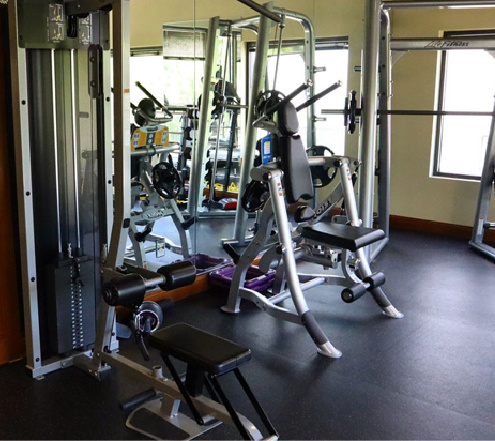Back pain can develop for a broad number of reasons, as any back pain sufferer knows. In addition to muscle strains and ligament sprains that often cause acute and relatively short-term back pain, conditions that cause compression of the spinal cord and…
Back pain can develop for a broad number of reasons, as any back pain sufferer knows. In addition to muscle strains and ligament sprains that often cause acute and relatively short-term back pain, conditions that cause compression of the spinal cord and other nerves are also common. Chronic back pain and associated symptoms such as tingling, numbness, and muscle weakness can be extremely debilitating and take you away from a good quality of life.
Fortunately, there are a wide array of options for back pain relief, including minimally invasive surgery. For patients who are good candidates for these procedures, minimally invasive surgery is an effective option for long-term relief. Take a moment to explore the following easy-to-understand guide to finding the back pain relief you deserve. If you have any questions or would like to learn more, don’t hesitate to reach out to a member of our caring and dedicated team.
Spine Conditions that Cause Back Pain Through Spinal Cord and Nerve Root Compression
The main role of the spine is to support the upper body while also protecting the spinal cord and the nerve roots as they exit the spine. To do this while still allowing for movement and flexibility requires moving parts, including flexible discs and spinal joints. However, these parts undergo a lot of stress and are prone to wearing down and causing pain due to the natural aging process.
When this happens, it can lead to the following conditions that can cause narrowing in the spinal column and compression of the spinal cord and other spinal nerves:
- Herniated discs
- Bulging discs
- Bone spurs
- Arthritic joints
Back pain occurs when displaced lower spinal anatomy puts pressure on either the central spinal cord or an exiting nerve root that sends pain signals to the back or other areas, such as the buttocks, legs, and feet.
When to Consider Surgery for Back Pain
In most cases, any type of spine surgery is a last-resort treatment option for back pain. Conservative treatments such as hot and cold therapy, over-the-counter medication, physical therapy, and steroid injections help many patients manage symptoms and enjoy a good quality of life. This is particularly true when combined with a spine-healthy lifestyle that includes a nutritious diet, regular exercise, good posture, avoiding tobacco products, and staying hydrated.
If weeks or months of fully exploring nonsurgical treatment does not bring needed relief, you may decide to consult with a surgeon to help achieve back pain relief. This typically involves the following steps:
- Questions about your specific symptoms
- A review of medical and treatment history
- A physical evaluation including movement tests
- A review of diagnostic imagery, such as an MRI
- Ordering new diagnostic testing, if needed
For a back surgery to successfully relieve back pain, there must be an operable condition that has been positively identified as the source of symptoms. In most cases, this means accessing the spine and removing the disc material, bone spur, or other anatomy that is causing compression of the spinal cord or a nerve root.
What is Minimally Invasive Surgery and How Can it Help Back Pain?
Many people are reluctant to undergo back surgery, even if a surgeon is recommending it as the best course of action.
Often, this is due to the risks and difficulties associated with traditional open back surgery. For years, the only way to access the spine was with a large incision and significant cutting and tearing of the muscles.
Thanks to the continuing advancement of medical technology and surgical techniques, minimally invasive surgery allow surgeons to access the spine through a smaller incision. By using tools and techniques that enable a muscle-sparing approach, minimally invasive surgery allows for an outpatient procedure, a shorter recovery time, and reduced risk of certain complications. When combined with a comprehensive rehabilitation program and a commitment to spine healthy lifestyle choices, minimally invasive surgery can offer long-term back pain relief that gets people back to the people and activities they love quicker.
Patients who are candidates for an outpatient procedure can even avoid hospitalization and return to their home or a hotel room with their loved ones the night of the procedure.
Spine Center Atlanta — Advanced Minimally Invasive Surgery to Treat Your Back Pain
Led by James L. Chappuis, MD, FACS, our world-class minimally invasive spine surgery center can help patients overcome back pain and get back to a healthy and active lifestyle. Whether you have been diagnosed with a herniated disc, bulging disc, spinal arthritis, spinal stenosis, or spinal cord compression, we can help. At our facility, we perform a full range of surgical treatments for back pain relief, including minimally invasive surgery.
Our state-of-the-art surgery center is certified by the AAAASF to meet the highest standards of surgical treatment and patient care. This means Spine Center Atlanta meets the most stringent national requirements for operating room safety, equipment, personnel, and surgeon credentials. We also have an advanced rehabilitation facility to help you regain strength and function in the critical days and weeks after undergoing a procedure.
To learn more about your options for back pain relief if you are considering surgery, contact one of our compassionate representatives today.






























